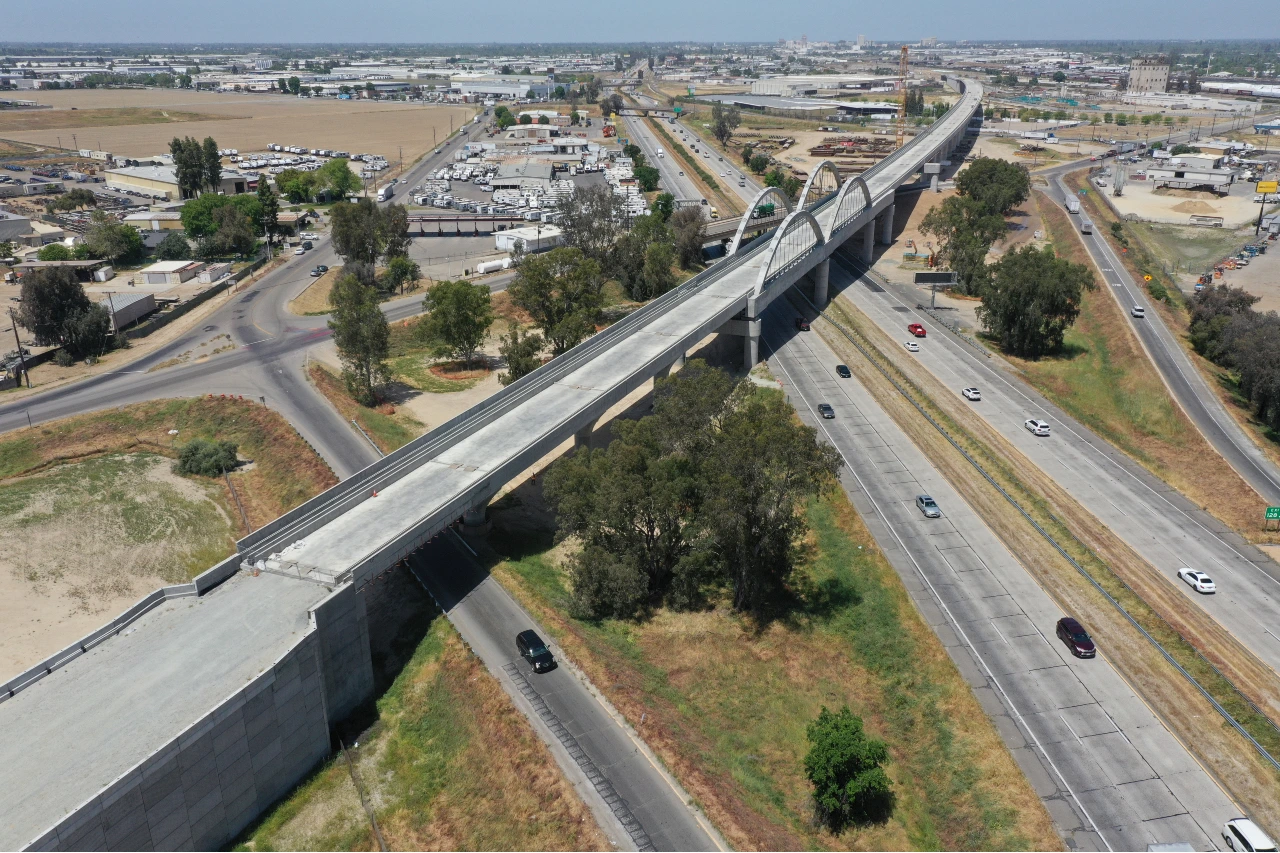
California High-Speed Rail Authority and Tutor-Perini/Zachry/Parsons recently unveiled the completion of the Cedar Viaduct in Fresno. The 3,700ft-long structure will serve high-speed trains travelling at 200-plus mph over State Route (SR) 99, Cedar and North avenues.

The Cedar Viaduct features a dual span of cast-in-place arches that are visible from both sides of the highway, supporting the weight of future high-speed trains travelling atop the deck of the structure. Each arch spans 179ft and is nearly 40ft tall. The Cedar Viaduct is one of several structures along the high-speed rail line with arches, including the San Joaquin River Viaduct.
Construction Phase 1, the first 32-mile stretch of high-speed rail between Avenue 19 in Madera County and East American Avenue in Fresno County, includes the Cedar Viaduct.
During construction, the California High-Speed Rail Authority created over 10,000 construction jobs, with a majority going to residents from the Central Valley.
California High-Speed Rail Authority has already begun work to extend the 119 miles under construction to 171 miles of future electrified high-speed rail from Merced to Bakersfield. With more than 30 active construction sites in California’s Central Valley, the California High-Speed Rail Authority has environmentally cleared 422 miles of the high-speed rail programme from the Bay Area to the Los Angeles Basin.
“At almost three-quarters of a mile long, the Cedar Viaduct is one of our largest and most visible structures across the alignment and one of the significant achievements to date on the program,” said Central Valley Regional Director Garth Fernandez. “The completion of this structure was made possible by our dedicated project team and by the numerous women and men in Labor who brought the project to life.”
The system operates at speeds over 200mph, covering the distance between San Francisco and the Los Angeles basin in under three hours, with plans to extend to Sacramento and San Diego, spanning 800 miles and featuring up to 24 stations.
According to the 2022 Economic Analysis Report by the California High-Speed Rail Authority, the first-of-its-kind high-speed rail project in California is injecting billions of dollars into the state’s economy and generating favourable economic outcomes across various regions.
[Read more: California’s housing growth increases to its highest level since 2008]






